Carol and I just got back from a short trip to the mountains near San Isabel, Colorado, so we’re a little bit beat and (especially Carol) just a little bit sunburned. We rented a cabin at Aspen Acres campground, and walked the dogs all the way around Lake San Isabel. Not much else got done there, which was the whole point. Some new scenes from Ten Gentle Opportunities occurred to me, and that’s as far as the doing went.
But I do want to remind my Denver metro-area readers that Jim Strickland and I will be at Who Else! Books this coming Saturday, August 13, to talk about and read from our double novel Drumlin Circus / On Gossamer Wings. We’re slotted at 3 PM. The bookstore is at 200 S. Broadway, Denver 80209.
I’ve not been to the Broadway Book Mall before, so I may be up there a little earlier than that to poke around. I’m hoping to find some evidence that independent bookstores are on the rise again, after two decades of deepening eclipse. I remember the first time I ever saw a Borders, when Carol and I visited Rochester NY in 1991. I recall thinking: This is going to put a huge dent in the indie bookselling business, and I was right. What I couldn’t guess in 1991 was that the Internet was eventually going to put a huge dent in Borders–like, right between the eyes.
The Internet can do a lot. It can’t do everything. Something will replace Borders. Sooner or later we’ll find out what.
Anyway. I like bookstores. Always have, always will. Most that were in Colorado Springs when we arrived in 2003 are now gone. We have to go to Denver for certain things like Elfa shelving, and it’s starting to look like we’ll have to go there for books as well. I’ll be going on Saturday with my usual hunger for serendipity, and if you’re in the area see if you can stop by.

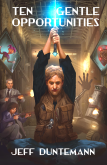

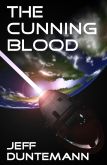

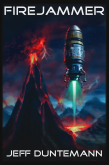
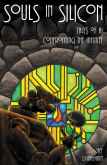
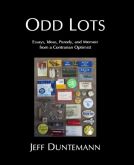
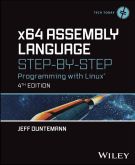

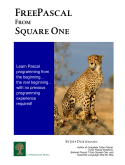
Well, the Tattered Cover appears to be holding its own, and the Highlands Ranch store, for one, certainly rivals a Borders in size. From the first time I saw their store (probably the LoDo one), it always reminded me of the old Earthling Bookstore on State Street in Santa Barbara (long since closed, alas). And, for technical books, I can’t do better than Softpro, which is not too far from my office.
I’ve never been to the Highlands Ranch store, mostly because of inertia and old habit: We had the “big” Borders and B&N right across the street from one another up near Chapel Hills here–with the Best Buy right behind B&N. The Borders stores are gone, so periodic field trips up there are getting more and more likely, and will become more and more frequent. I drop $100 practically every time I go to the Lodo store, and the to-be-read pile is shrinking fast. Time to pump it up again.
I’ve been starting to take the contrarian view that the Internet may turn out to be the salvation of the independent bookstore.
When I was in college every mall had at least a Walden or a B Dalton, and (I think) computerization of the stocking process had not yet become so automated that they were totally interchangeable. I would visit every one around in my wanderings because in those days you might actually find something different. Even then there weren’t that many independents, but I had a couple I visited regularly. With the mall stores concentrating on what was new and hot they could generally still carry a selection you did not find at the chains.
Then came competition by size. I found a Brentano’s that made all the rest look tiny. A few years later huge B&Ns appeared to raise the stakes, and then Borders raised it farther. And the independent stores had a harder and harder time having anything on the shelves to differentiate themselves.
Now the mega-stores are dying, killed by the internet. The analogy I’ve been thinking of is battleships. For decades the naval arms race was for bigger and bigger battleships, culminating in WW II when the largest were built, but were suddenly made obsolete by the aircraft carrier. But recall that the exit of the battlewagons still left a high demand for destroyers.
As Borders and (eventually) B&N fade from the scene it leaves a vacuum. Nobody can make money on best sellers any more; between Amazon, Walmart, Costco and even the supermarket (to say nothing of the Kindle!) there isn’t any profit left. But as long there is still demand for physical books on a wide range of subjects, I think there will still be demand for browsing and inspecting before purchase. It is that niche where the independent stores will increasingly become the only choice.
An interesting hypothesis, Roy. It will be interesting to see whether the physicality of books and their evolution to specific needs (cookbooks vs coffee table picture books vs children’s books) outweighs the importance of simply being a media to conduct information. The latter has proven to be the first order force in audio media (save for a comparatively small niche market for LPs.)
I suspect that in the end, the majority of “books” will be ebooks. We’ll see the same sorts of distribution we’re seeing now for physical books – discount stores for the most common, formfactor specific books, like children’s books and cookbooks, as well as printed, disposable copies of mega-sellers for use in high risk environments (the sauna, the bathroom, etc.) Small bookstores will carry a broad range of titles, and I suspect they’ll carry them in hardback, because the multi-century endurance of a well made hardbound book will be its major advantage over a digital copy. You buy the ebook to read it. You buy the hardback to /keep/ it.
This may change, though. Younger generations are much more comfortable with “cloud storage” than those of us who grew up on floppies and the ephemeral (and expensive) nature of digital storage.
-JRS
I’m still nervous about cloud storage, especially for stuff that doesn’t exist elsewhere. The value-add in the Cloud is that you can get to it from anywhere, and that’s actually a pretty strong feature, much stronger than its persistence or robustness. I may eventually use it, but I’m going to be very sure that whatever I put out in the Cloud will exist in at least four other places.
That’s how I work right now: Everything I value exists in five storage locations, sometimes six. Only three of those are here in the house. One of them is a bank vault, another is 1100 miles away.
Digital storage is getting so cheap that cost will soon cease to be a factor, if it hasn’t already. Digital storage is now priced for wholesale archiving of video, which is a very fat format. Ebooks, by comparison, take almost no space at all. Assuming an average file size of 4MB (pulled high by titles with lots of graphics; novels are typically 300K-500K)an 8GB thumb drive costing $8-$10 will hold 2,000 ebooks. I figure I’ve read maybe 3,000 books in my entire life, tops–maybe fewer. So today, storage of a lifetime of (aggressive) reading, including backups, might cost $20. That’s cheaper than a single hardcover. In a few years it’ll be half of that.
While a lifetime of reading might fit on a couple of flash drives, the data stored on those drives won’t endure for a lifetime.
As far as I know, none of our electronic storage media can be counted on to hold data as long as a good hardback does. The backups go bad as the same rate as the original, so having backups is not the solution. That is one of the reasons why librarians, historians, and others who take a long view are so nervous about our headlong rush to turn everything into a digital-only publication.
I don’t know what the solution will turn out to be. Storing the data in many places, and routinely copying the data to new storage every few years is the best that can be done for the time being. (But how do you protect against copying data that has already been altered? There are techniques for that, but they are not widely implemented.) Cloud storage has potential for automated solution of the data rot problem, but pursuit of the cheapest solution all but ensures that the necessary measures will not be taken.
Data rot has never been a problem here. The only data I’ve ever lost was lost (and it wasn’t much) because of bad hardware. I have files that I wrote on a CP/M box in 1980, and the data format (WordStar) is more of an issue than bitrot. (I’ve long since converted those files to Word, but I’ve kept the original .wp files, who knows why? They still read.) I rotate external backup drives, and the data is refreshed almost weekly on average. The one in the vault is never (well, hardly ever) more than a month old. I know that bitrot happens; I tested some floppies a year or so ago from the mid-90s, and all of them had gone bad. This was no surprise, and no problem, as data never goes years’n’years here on the same physical gadget without refresh.
Copying already-corrupted files is actually a problem, but as these files are generally detected by the OS as they’re being copied, it’s not as bad a problem as it may seem at first glance. I restore a corrupt file or two from backups every year or so. Nothing has ever been irretrievably lost.
I have between 500 and 600 hardcovers here, and if a brushfire came up the mountain and took out the house, they’d all be lost. I have some burned stumps down in the gully from a fire that came through here in 1954, so it does happen from time to time, and it may not be entirely preventable. On even a few minutes’ notice, I can have Carol and the dogs and several terabytes’ worth of backup drives in the 4Runner and hauling ass out of here. Carol and I have a backup plan, broken out by time-to-evacuate: If we have an hour, we do this. If we have fifteen minutes, we do this. I we have five minutes, we do this, etc. The big challenge is photo albums, some of which cannot be readily scanned. I can probably buy duplicates of most of my books, granting that some wonderful personal inscriptions (like one from Damon Knight) would be gone forever.
Bitrot can be avoided by making sure your bits never get too old without reincarnation. I’ve been doing that since the CP/M era, and it’s always worked–and has never been all that much bother.
Ah, you were using the term “backup” properly. I thought you were talking about archiving. That is where bit rot is a problem. My apologies — I should have stopped to realize that you aren’t like many people I know.
I don’t disagree that the portable nature of digital storage is an advantage in an emergency such as a fire, though if you happen to be out of the house at the time, that advantage is not helpful (but that is where the easy nature of making copies to be stored off-site comes in).
I don’t know, depending on how you count “read” I may have read far than 3.000 books, and you may have too. I have subscribed to the stf magazines for decades. Say 500 issues per title gets into the thousands of issues pretty quickly. I doubt that I ever read more than a handful of issues from cover to cover, but I read something out of almost every issue. So, do these count as books read? Or not?
(And, yes, nowadays the stf magazines are published as ebooks, too.)
I wasn’t counting the magazines, which (like you) I generally didn’t read cover-to-cover. I’m sure I counted some books that I didn’t finish, though most of that happened so long ago I can’t hang numbers on it. I think if I consider a book more than 50% read to be “read” then the numbers are good. I gave away a huge number of bad and so-so books when we left Arizona, most of which were read but hardly all. 60 years of details pile up fast, in a well-read life!
[…] I mentioned in my entry for August 10, 2011, Jim Strickland and I landed a reading/signing slot yesterday afternoon at the wonderfully quirky […]